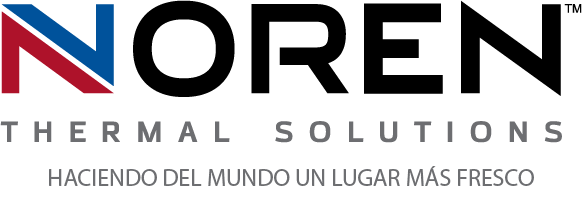 Over the last several decades, as technology has advanced and taken over significant portions of modern manufacturing and other industries, a variety of electrical thermal management methods have evolved to keep up. For many companies, phase-change cooling has been one of the most important of those methods. Utilized by advanced heat exchangers and similar custom thermal solutions, phase-change cooling is the process of using an eco-friendly cooling fluid and its latent heat of vaporization to rapidly transfer electrical waste heat. It can be effective even for the most demanding applications, and can create continuous heat transfer with minimal energy.
Over the last several decades, as technology has advanced and taken over significant portions of modern manufacturing and other industries, a variety of electrical thermal management methods have evolved to keep up. For many companies, phase-change cooling has been one of the most important of those methods. Utilized by advanced heat exchangers and similar custom thermal solutions, phase-change cooling is the process of using an eco-friendly cooling fluid and its latent heat of vaporization to rapidly transfer electrical waste heat. It can be effective even for the most demanding applications, and can create continuous heat transfer with minimal energy.
How to take advantage of phase-change cooling
A cooling fluid’s latent heat of vaporization is the amount of heat that it takes to change the fluid from its liquid state to its vapor state. As it does so, the fluid prevents the heat from escaping and causing a rise in the surrounding temperature. Compared to its liquid state, the vapor state of the fluid is less dense, and therefore, can travel much easier – such as within a modern heat exchanger. When utilized to collect and transfer waste heat within a heat exchanger, phase-change cooling creates a more efficient and sustainable method of thermal management.
Utilizing the process for electrical thermal management
When a cooling fluid absorbs heat within a heat exchanger and changes into a vapor, the heat exchanger’s design makes it easy for the vapor to travel away from the heat source, allowing more liquid to flow toward the heat. The vapor is transferred to a cooler area of the heat exchanger, such as a heat sink, where it can release the heat and change back into its liquid state. This creates an easily containable cycle where a fluid constantly absorbs and transfers heat, changing phases as necessary.
The benefits of passive heat transfer
The passive heat transfer created by phase-change cooling has become the source of many of today’s advanced thermal management systems. Companies that utilize them do so because of their simplified constructs, reduced energy needs, and little need for maintenance compared to more traditional cooling solutions. Rather than using chilled air to combat electrical waste heat, phase-change cooling provides a way to prevent it from accumulating by simply keeping it in motion. Because the apparatus needed to facilitate phase-change cooling doesn’t include things like complicated HVAC machinery or chemicals that need to be refilled, they are among the most highly adaptable thermal management solutions available.
For more information about the benefits of modern phase-change cooling, call Noren Thermal Solutions in Taylor, TX, today at 866-936-6736.







